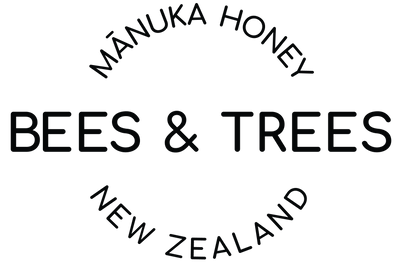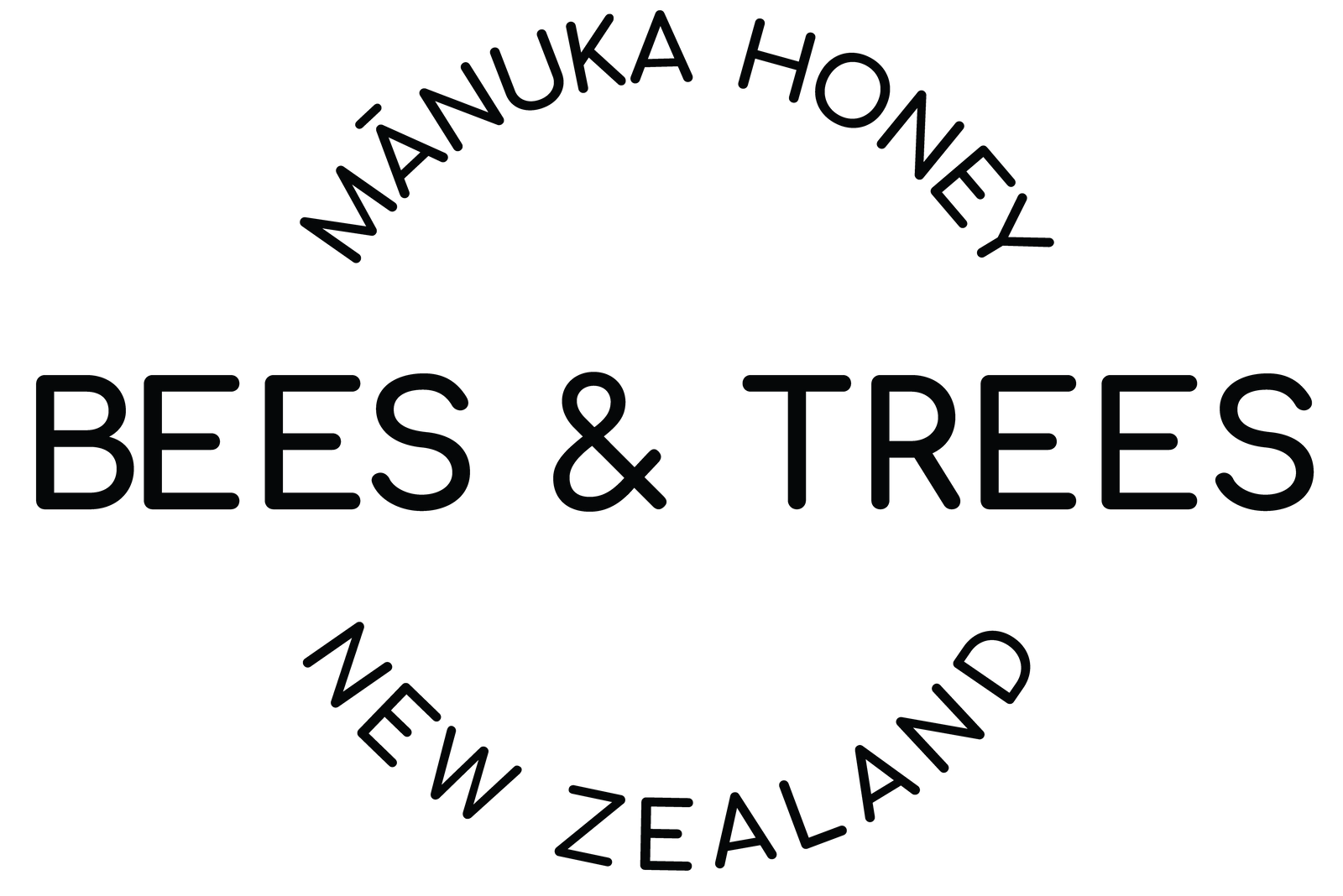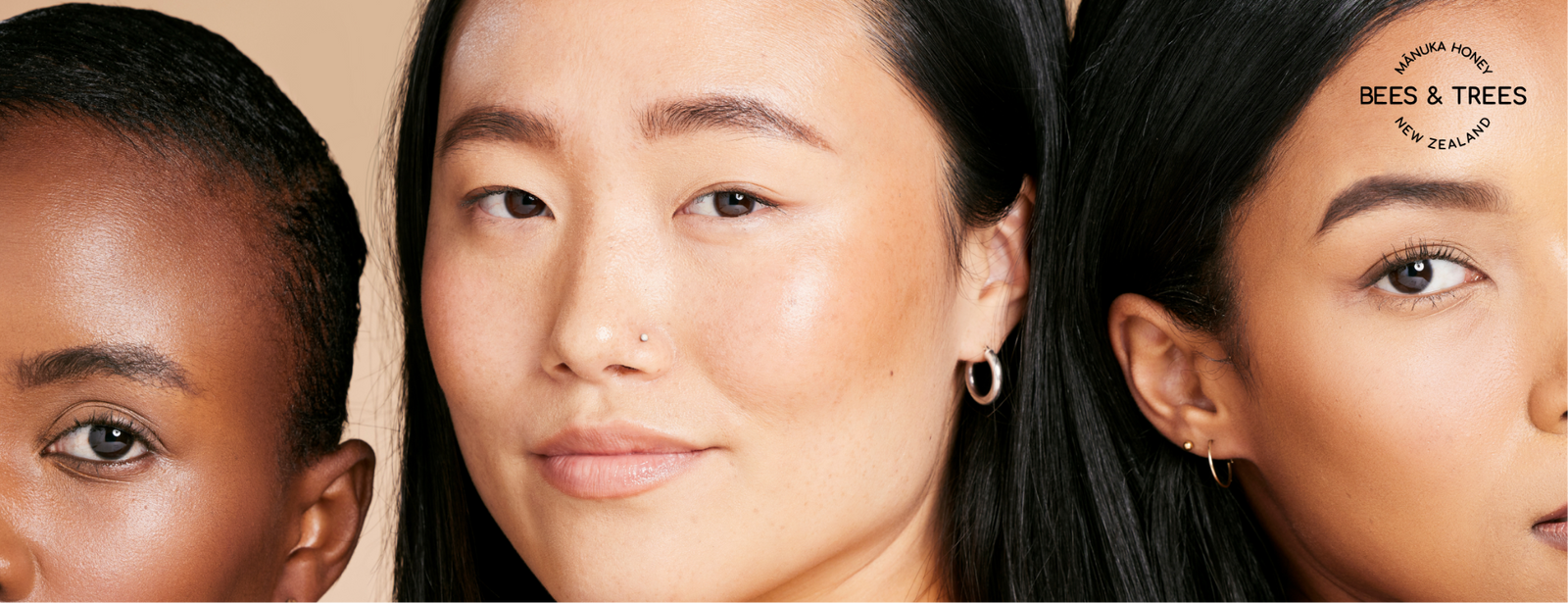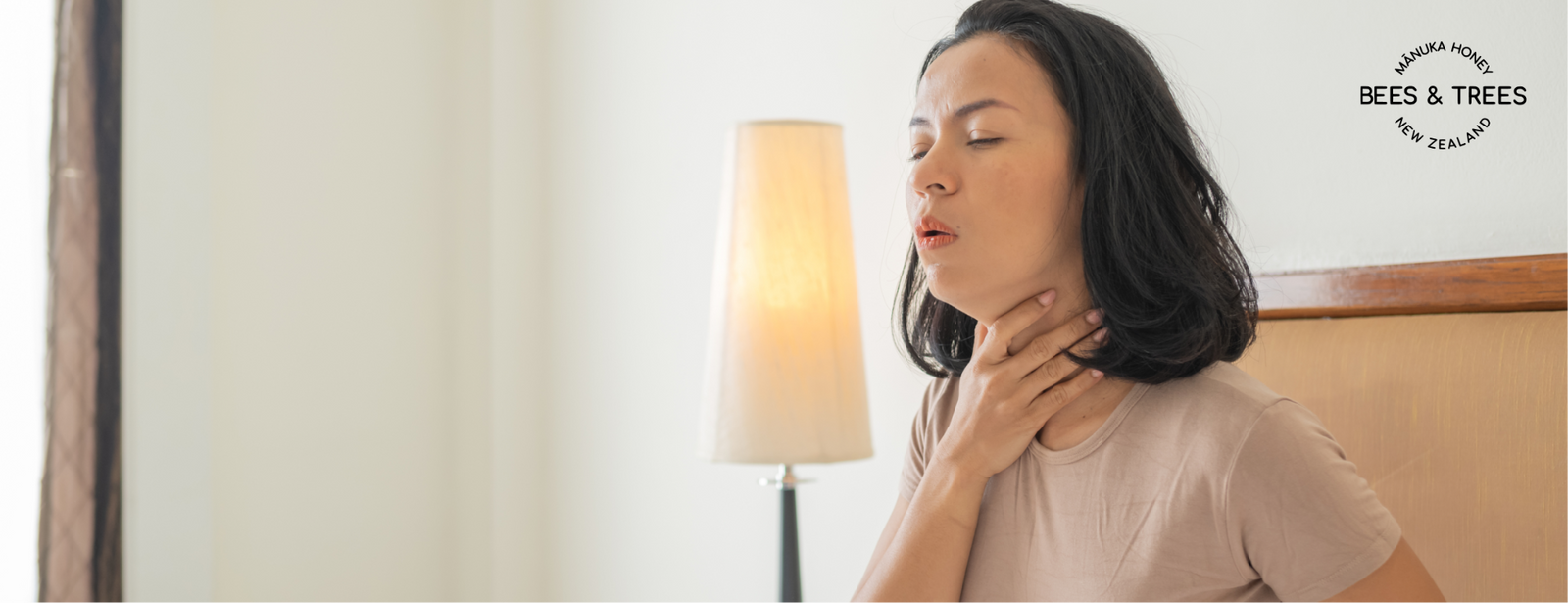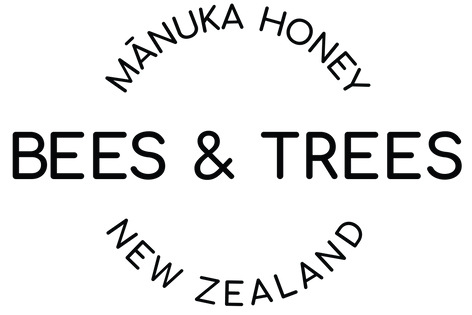Nature’s Antibacterial
The benefits of honey have been well documented for centuries. However, in the past few decades, researchers have discovered that one particular type of honey, Manuka honey, is superior to all others in terms of its antibacterial potency. Manuka honey is produced by bees that forage on the nectar of Leptospermum Scoparium, aka the Manuka tree, native to New Zealand. Manuka honey contains a special antibacterial property known as methylglyoxal, abbreviated as MG or MGO. Because this property is unique to Manuka honey, your local honey does not have the same properties and does not work in the same way. The methylglyoxal works synergistically with all of the other amazing properties of honey to claim the title of one of Nature’s most potent superfoods.

According to researchers at the School of Molecular and Microbial Biosciences at the University of Sydney, bacteria, including those with high levels of antibiotic resistance, were killed by Manuka honey. And further, this remarkable type of honey not only kills bacteria, the bacteria tested did not build resistance to the honey, like they do with antibiotics.(1) The bacteria die and you heal. This is very comforting in a world where pharmaceuticals are overused, costly, and ineffective. Mother Nature knows best.
What Manuka Honey Can Do For You
Manuka honey’s health and wellness properties range from antibacterial, antibiotic and wound healing, anti-inflammatory, antiviral, to immune-stimulatory. It is effective in treating skin infections in wounds, acne, eczema, rashes, and even cancer (2). Manuka honey is also effective in the treatment of gastrointestinal problems (3), and sinus infections (4). For those interested in fitness and sports, exploring the uses of manuka honey for exercise can reveal additional benefits, particularly in terms of energy and endurance enhancement. Much research has been done on Manuka honey, proving its effectiveness for a wide variety of health and wellness issues.
Warning: Not All Manuka Brands Are Equal
Manuka honey brands have various ways to convey the level of methylglyoxal (MG or MGO) potency in their honey. As you look at different labels, it can be very confusing. In order to help reduce this confusion, the New Zealand Government has stepped in to regulate the labeling of Manuka honey. As a result, there are now only two ways to properly label Manuka honey. Manuka honey should either be labeled with the actual amount of methylglyoxal (MG or MGO), or with a UMF rating (Unique Manuka Factor). UMF correlates to the amount of methylglyoxal (MG or MGO) in the honey, see table below (1)
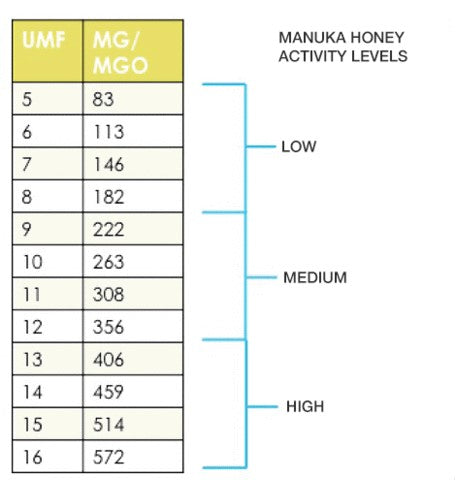
Note 1 - This chart shows the correlation between a UMF rating and the MG concentration of the honey. To display the UMF trademark on the label the honey must also be tested for threshold levels of Leptosperin and Hydroxymethylfurfural (HMF). These are two of the 6 chemical markers, plus a DNA marker that are typically tested for on Manuka honey. Four of the six chemical markers, plus the DNA marker are required by the NZ government before Manuka honey can be exported.
When you see anything else on a label of Manuka honey, you should steer clear. Examples of what continues to show up on labels include: “Active 15+”, “Bio-Active 15+”, “Total Activity 15+”, “K-Factor 15+”, and others. The 15 in these examples is just an example; you will find numbers ranging from 5-20 typically.

Bacteria-Fighting Benefits of Manuka Honey
Manuka honey:
-Fights microbial infections without irritating your skin.
-Heals the skin more quickly as it works its magic, all while leaving less scarring.
-Balances the pH level of the skin, keeping bacteria at bay.
-Soothes inflamed skin making it softer and smoother.
How to Use Manuka Honey on Skin Infections
After cleaning your skin, apply Manuka honey to the affected area, then cover the entire area with a bandage. That’s it! Nature does the rest. Manuka honey is very safe to use, but be careful with your clothing – honey is sticky!
We also suggest eating Manuka honey to promote intestinal wellness, which will help your body’s natural balance of good and bad bacteria and prevent infections from forming in the first place. We recommend a teaspoon a day for wellness.
Click here to order a jar of Bees and Trees Manuka honey today. If you have any questions, we’re happy to help!
(1) Eur J Clin Microbiol Infect Dis. 2009 Oct;28(10):1199-208. doi: 10.1007/s10096-009-0763-z. Epub 2009 Jun 10.
(2) http://journals.plos.org/plosone/article?id=10.1371/journal.pone.0055993
(3) http://onlinelibrary.wiley.com/doi/10.1002/ptr.2523/abstract
(4) https://www.ncbi.nlm.nih.gov/pubmed/27935259
